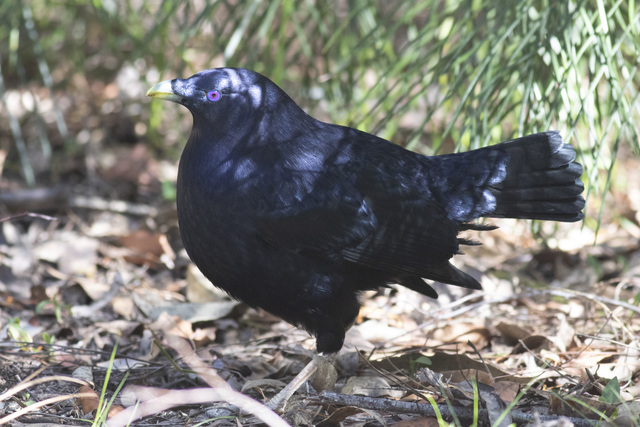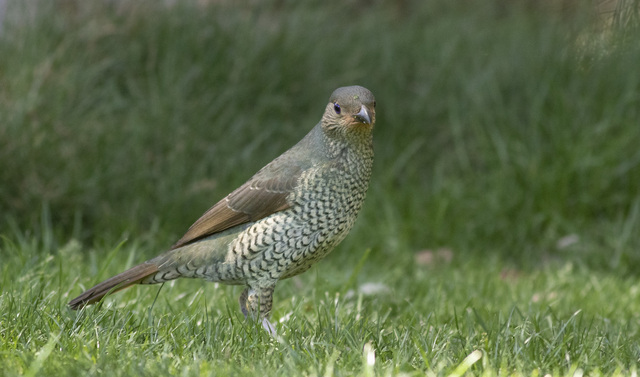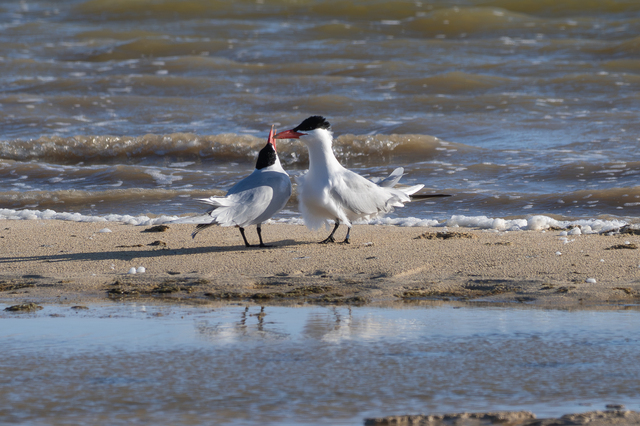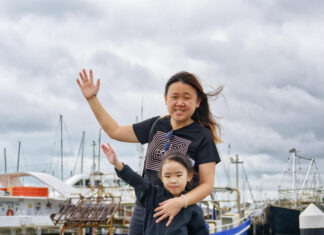I’m writing this at the end of my road trip on the long drive back to Ocean Grove from Bermagui.
I said goodbye to the white-bellied sea eagles, satin bowerbirds and white-headed pigeons as we exited Bermi and psyched ourselves up for the long drive home.
One of the highlights of the trip was seeing many whales undertaking their annual migration from their breeding grounds to the Antarctic for summer. In Bermagui I saw many whales swim very close to shore, so much so that I could hear them communicating with each other.
There was also an ocean sunfish in the shallows at Horseshoe Bay one morning, which gave all the people who were having a swim a huge fright, as sunfish have a large fin that sticks out of the water, and the beach was closed because the lifesavers thought it was a shark.
I tried very hard to see a superb lyrebird in Bermagui, as I do not have a decent photo of this magnificent bird in my collection. I was getting out of bed at 5.30am every day and driving to Bermagui Mudworks Pottery, as the owners were happy to let me wander on their bush block to listen and look for superb lyrebirds.
Last year I saw them, but this year I could hear them calling, although I did not lay eyes on them. It was lovely to hear them and also to hear a powerful owl calling on two of the mornings.
A highlight of my trip was spotting an osprey sitting on a lightpole in Bermagui Harbour. In all my 30 years of holidaying in this area I have never seen an osprey. When I stopped eating my lunch at the cafe at the harbour and grabbed my camera, it decided to fly off in a northerly direction, so my photos were ordinary, but it was a lovely moment.
I also went to the Blue Mountains and enjoyed visiting the botanical gardens in that region where I heard some lyrebirds, spotted a pair of eastern shrike-tits, and saw many yellow-faced honeyeaters.
At Jervis Bay I also visited the Botanic Gardens and saw a male satin bowerbird hanging around his bower. Bowers are not nesters. The male bowerbird builds a structure to attract females. Male bowerbirds decorate the bowers, which consist of two parallel rows of thin sticks placed in the ground, with blue objects (such as bottle tops and clothes pegs for example) to attract the female bowerbirds.
While I was watching the male near the bower, a female walked around the bower. Female bowerbirds construct a platform nest made of sticks in trees, around 30 metres from the ground.
On the subject of mating, Robin Spry sent me a photo of a pair of Caspian terns courting at Lake Victoria, where Robin has a farm.
The female Caspian tern is on the left of Robin’s photo and has a faded orange flag number 21 on her upper left leg, plus a silver band on her upper right leg. She was banded as a chick on Mud Island in November 2011, so is almost 25 years of age. The male has a silver band on his lower left leg but has not been aged.
Robin has been observing this pair at her lakeside since August 2021. In February 2022 the male brought his fledgling back to her property.
I made a Google search as to the ages of Caspian terns in the wild, and the result was that they live for around 12 to 15 years, with the oldest recorded living to 32 years.
The Caspian terns that visit Robin’s farm are obviously doing very well to live to over 20 years of age, and to be still breeding.









